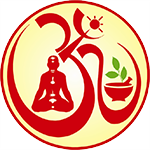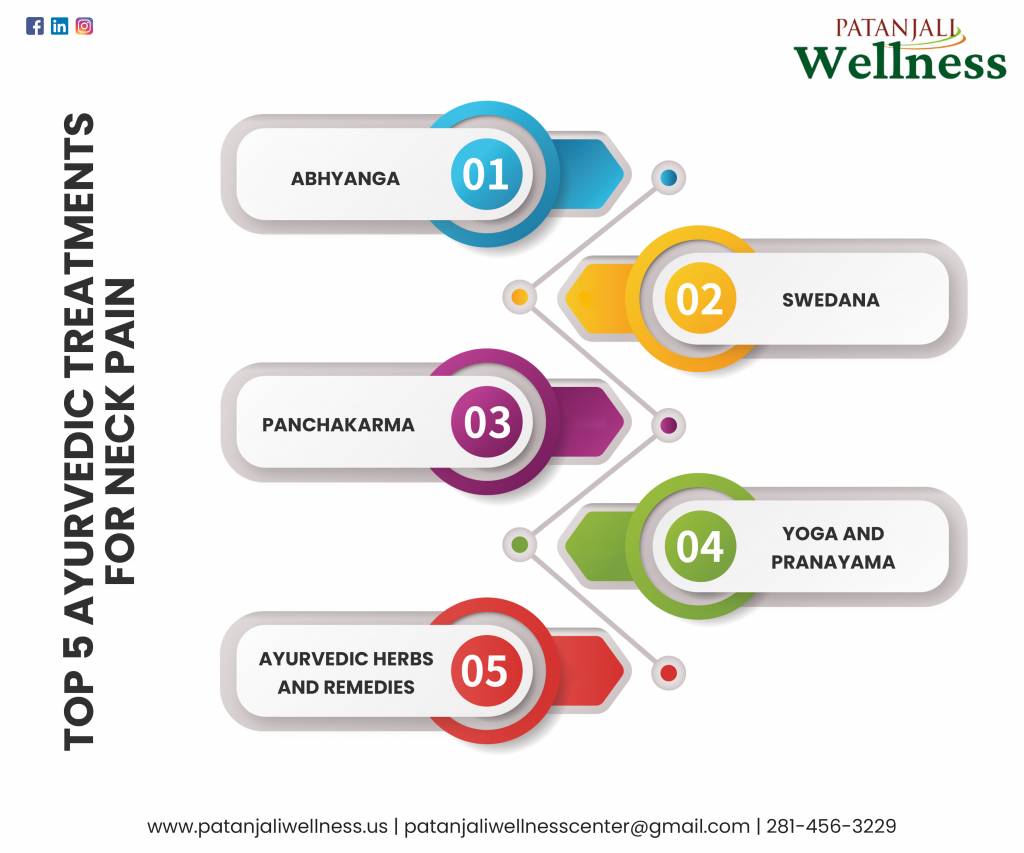Neck pain and other health issues are severe problems that individuals face. According to Ayurveda, neck pain is a widespread issue attributed to imbalances in the Vata dosha. Vata governs movement and controls the nervous system, making it susceptible to causing pain and stiffness in the neck region.
Neck pain in Ayurveda can be attributed to various factors, such as poor posture, excessive use of electronic devices, and prolonged sitting or standing in incorrect positions. Additionally, stress, lack of exercise, and insufficient sleep can aggravate Vata and contribute to neck discomfort.
Ayurveda also recognizes that certain occupational activities and repetitive movements can strain the neck muscles and lead to pain. Understanding these causes through an Ayurvedic lens allows us to adopt holistic treatments and lifestyle modifications to address the root imbalances and find effective relief from neck pain.
In this article, we will not only explore the underlying causes of neck pain but also unveil the timeless wisdom of Ayurveda in addressing this common ailment. By understanding the occurrence and root cause of neck pain, we can better appreciate Ayurveda’s holistic approach to providing relief and restoring harmony to the body, mind, and soul.
So, join us on this enlightening journey to discover the ancient secrets of Ayurveda and bid farewell to neck pain once and for all.
Doshas and its Connection with Neck Pain
In Ayurveda, the three doshas – Vata, Pitta, and Kapha – play a significant role in neck pain. Each dosha has its characteristics and functions, and when they are imbalanced, they can contribute to various health issues, including neck pain.
Vata Dosha and Neck Pain
Vata dosha takes care of movement and governs the nervous system. When Vata becomes imbalanced, it can lead to dryness, stiffness, and pain in the body, including the neck region. Factors such as poor posture, excessive use of electronic devices, stress, and lack of exercise can aggravate Vata and contribute to neck pain.
Pitta Dosha and Neck Pain
Pitta dosha is associated with heat and metabolism in the body. When Pitta is imbalanced, it can lead to inflammation and irritation in the neck area, causing discomfort and pain. Overworking, excessive heat exposure, and spicy or acidic foods can aggravate Pitta and contribute to neck pain.
Kapha Dosha and Neck Pain
Kapha dosha takes care of structure and lubrication in the body. When Kapha becomes imbalanced, it can lead to heaviness, congestion, and stiffness in the neck region. A sedentary lifestyle, cold and damp weather, and excessive consumption of heavy and oily foods can aggravate Kapha and cause neck pain.
To address neck pain through Ayurveda, it is essential to identify the doshic imbalance causing the discomfort. Treatments may include lifestyle modifications, dietary changes, herbal remedies, and specific Ayurvedic therapies that aim to balance the doshas and promote overall well-being. By addressing the root cause of neck pain through an Ayurvedic lens, individuals can find long-lasting relief and prevent future occurrences of discomfort.
5 Most Effective Ayurvedic Treatments for Neck Pain
Abhyanga (Ayurvedic Massage) for Neck Pain Relief
Abhyanga is an ancient Ayurvedic massage technique that involves the application of warm herbal oils to the body, including the neck and shoulders. This therapeutic massage is relaxing and offers numerous benefits for neck pain relief.
During the massage, the warm oil penetrates deep into the skin and muscles, helping to nourish and lubricate the tissues. The gentle strokes and rhythmic movements of Abhyanga promote better blood circulation, which can alleviate muscle tension and reduce inflammation in the neck area.
Abhyanga massage also encourages the release of endorphins, natural pain-relieving hormones, providing a sense of relaxation and comfort.
Additionally, Abhyanga helps to balance the Vata dosha, which often plays a significant role in neck pain. By calming Vata, the massage promotes a sense of grounding and stability, reducing the dryness and stiffness commonly associated with Vata imbalances in the neck region.
Abhyanga massage can improve sleep quality and reduce stress, contributing to overall well-being and supporting the body’s natural healing processes.
Specific Oils and Herbs for Neck Pain Relief
Regarding neck pain relief, Ayurvedic practitioners often use specific oils and herbal blends during Abhyanga to enhance its effectiveness. Some commonly used oils and herbs for Ayurvedic therapy to cure neck pain include:
- Sesame Oil
- Mahanarayan Oil
- Bala (Sida cordifolia)
- Ashwagandha (Withania somnifera)
- Shatavari (Asparagus racemosus)
Oils and herbs can be customized according to the needs of the individual and their doshas imbalances. Therefore, consulting an Ayurvedic professional to find the best oils and herbal mixtures for each unique body type is better.
Swedana (Herbal Steam Therapy)
Swedana massage, also known as Herbal Steam Therapy, is an ancient Ayurvedic treatment used to promote relaxation, detoxification, and healing in the body. It involves the application of warm herbal steam to the body, either locally to a specific area or as a full-body treatment.
The word “Swedana” comes from the Sanskrit term “Sweda,” which means sweat or perspiration. During the therapy, the body is exposed to steam from boiling water infused with medicinal herbs.
The herbal steam is created by boiling water in a specially designed vessel, and various herbs are added to the water to infuse it with their therapeutic properties. The choice of herbs depends on the individual’s needs and health conditions.
Once the herbal steam is ready, the person sits inside a steam box or chamber, exposing the body to the warm, aromatic steam. The steam penetrates the skin and is absorbed by the body, promoting sweating and detoxification.
Highlighting the role of specific herbal blends in the steam neck pain treatment
Using specific herbal blends can enhance the effectiveness of herbal steam therapy for neck pain management. The choice of herbs may vary based on individual conditions and preferences. Here are some common herbs used in steam treatments and their roles:
- Eucalyptus
- Lavender
- Ginger
- Chamomile
- Mint
It’s essential to consult with an experienced Ayurvedic practitioner or herbalist to determine the most suitable herbal blend for your neck pain condition and ensure you do not have any allergies or sensitivities to the herbs being used. Additionally, pregnant women and individuals with certain medical conditions should exercise caution or seek professional advice before undergoing herbal steam therapy.
Panchakarma (Detoxification)
Panchakarma treatment is a comprehensive detoxification and rejuvenation therapy in Ayurveda, the ancient Indian system of medicine. It is a holistic approach aimed at balancing the body and mind while removing accumulated toxins (ama) and restoring the body’s natural state of health. Panchakarma consists of a series of purification and rejuvenation techniques that synergize to promote well-being.
Neck pain can result from various factors, including muscle tension, inflammation, poor posture, and stress. Panchakarma can be relevant to neck pain relief because it can address these underlying causes. The therapy’s detoxification processes help eliminate toxins contributing to inflammation, while the rejuvenation techniques promote relaxation and stress reduction, easing muscle tension and promoting healing. Panchakarma can be tailored to an individual’s specific condition and needs, effectively addressing neck pain and its root causes.
Specific herbal blends in Panchakarma (Detoxification)
In Panchakarma treatment, various herbal blends and formulations are used to support the detoxification process and promote overall well-being. These herbal blends are chosen based on an individual’s constitution (Dosha), the nature of toxins to be eliminated, and the specific Panchakarma treatment. Here are some common herbal blends used in Panchakarma detoxification:
- Triphala
- Trikatu
- Guduchi (Tinospora cordifolia)
- Neem (Azadirachta indica)
- Manjistha (Rubia cordifolia)
- Kutki (Picrorhiza kurroa)
- Punarnava (Boerhavia diffusa)
- Brahmi (Bacopa monnieri)
These are just a few examples of the herbal blends used in Panchakarma. Ayurvedic practitioners carefully select and combine herbs based on the individual’s specific needs and health conditions. Depending on the treatment plan, the herbs are often administered in various forms, such as herbal teas, powders, decoctions, or medicated oils.
Yoga and Pranayama (Breathing Exercises)
Yoga and Pranayama are ancient practices from India and integral parts of traditional Ayurvedic and yogic systems. Holistic approaches focus on harmonizing the body, mind, and spirit, promoting overall health and well-being.
Yoga
Yoga is a system of physical, mental, and spiritual practices that aims to unite individual and universal consciousness. The physical aspect of yoga involves various postures (asanas) designed to promote flexibility, strength, balance, and overall physical health. Along with the physical postures, yoga includes breath control (Pranayama), meditation, and ethical guidelines (Yamas and Niyamas).
Benefits of Yoga:
- Improved flexibility, strength, and posture
- Enhanced balance and coordination
- Stress reduction and relaxation
- Mental clarity and focus
- Increased self-awareness and self-acceptance
- Boosted immune system and overall vitality
There are various best yoga for neck pain, ranging from gentle and meditative practices like Hatha Yoga to more dynamic and physically challenging practices like Vinyasa or Ashtanga Yoga. People of all ages and fitness levels can practice yoga and exercise for neck pain, and it can be adapted to suit individual needs and abilities.
Pranayama (Breathing Exercises)
Pranayama is the art of breath control and is a crucial component of yoga practice. The word “Pranayama” is derived from two Sanskrit words: “Prana,” which means life force or vital energy, and “Ayama,” which means expansion or extension. Pranayama involves various breathing techniques that regulate the breath, calm the mind, and enhance the flow of life force throughout the body.
Benefits of Pranayama:
- Relaxation and stress reduction
- Increased lung capacity and respiratory efficiency
- Improved circulation and oxygenation of the blood
- Balancing of the nervous system
- Cleansing and purifying the respiratory system
- Enhanced focus and concentration
Ayurvedic Herbs and Remedies
Ayurveda, the traditional system of medicine from India, offers various herbs and remedies for managing neck pain. Before trying any of these remedies, it’s essential to consult with a qualified Ayurvedic practitioner or a healthcare professional to ensure they are suitable for your specific condition. Here are some commonly used best Ayurvedic herbs for neck pain:
- Mahanarayan Oil: This herbal oil is a blend of various beneficial herbs widely used for massage to alleviate neck and muscular pain. It helps reduce inflammation and promotes relaxation.
- Dashmool: Dashmool combines ten roots known for their analgesic and anti-inflammatory properties. It is used in various forms, such as herbal oils and powders, to relieve neck pain.
- Shallaki (Boswellia): Shallaki is well-known for its anti-inflammatory properties. It can help reduce swelling and inflammation in the neck, relieving pain.
- Guggulu (Commiphora wightii): Guggulu is often used in Ayurvedic formulations for its analgesic and anti-inflammatory effects, which can be beneficial in managing neck pain.
- Nirgundi (Vitex negundo): This herb is used topically in oil or ointment for relieving pain and stiffness associated with neck pain.
- Eucalyptus Oil: Eucalyptus oil is commonly used in Ayurveda for its analgesic properties. It can be used in massage blends to ease neck pain and improve blood circulation.
- Ginger (Zingiber officinale): Ginger has anti-inflammatory properties and can be used internally in ginger tea and externally as a poultice to relieve neck pain.
- Turmeric (Curcuma longa): Turmeric contains curcumin, a compound with potent anti-inflammatory effects. It can be used internally in food or as a supplement and applied topically as a paste to the affected area.
- Ashwagandha (Withania somnifera): Ashwagandha is an adaptogenic herb known for reducing stress and inflammation, which can indirectly help manage neck pain caused or exacerbated by tension and stress.
- Ayurvedic Herbal Compress: Applying a warm compress infused with herbal ingredients like ginger, eucalyptus, and turmeric can help relax the muscles and ease neck pain.
Remember that Ayurvedic treatments often take a holistic approach, considering the individual’s dosha (constitution) and overall health. Therefore, it’s crucial to consult an Ayurvedic practitioner who can recommend personalized herbs and remedies based on your specific condition and needs. Additionally, if the neck pain is severe or persistent, seeking medical attention for a proper diagnosis and treatment is essential.






